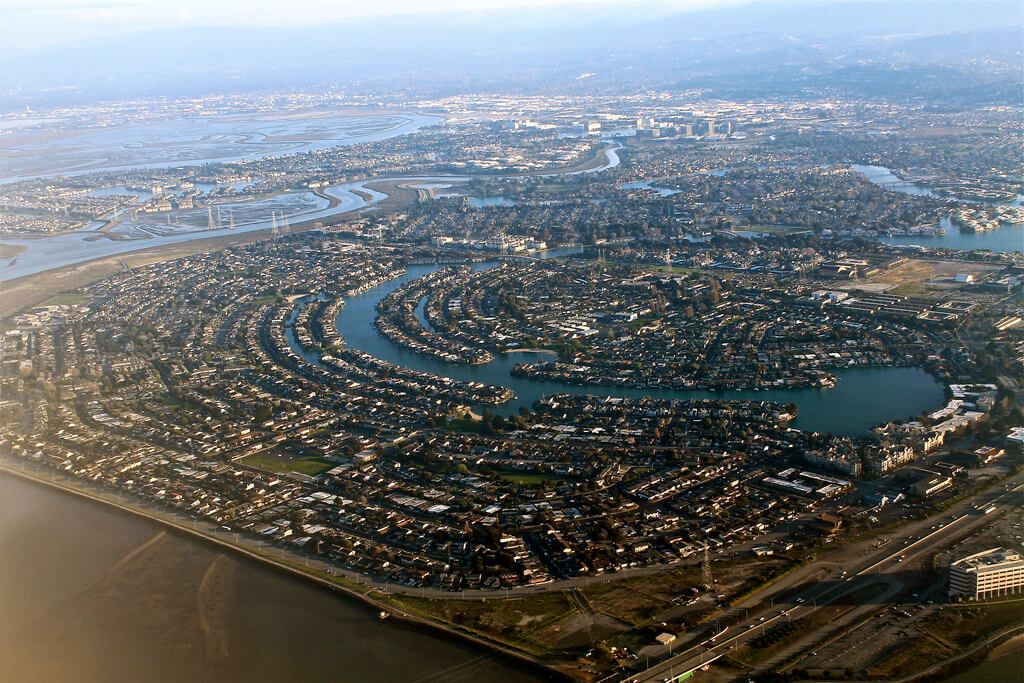The popular recipe for creating the “next” Silicon Valley goes something like this:
*Build a big, beautiful, fully equipped technology park;
*Mix in R&D labs and university centers;
*Provide incentives to attract scientists, firms, and users;
*Interconnect the industry through consortia and specialized suppliers;
*Protect intellectual property and tech transfer; and
*Establish a favorable business environment and regulations.
Except … this approach to innovation clusters hasn’t really worked. Some have even dismissed these government-driven efforts as “modern-day snake oil.” Yet policymakers are always searching for the next Silicon Valley because of the critical link between tech innovation, economic growth, and social opportunity.
Previous efforts at such clusters failed for a variety of reasons, but one big reason is that government efforts alone simply don’t draw people. That’s why a recent crop of experiments has focused more on building entrepreneurial communities, urban hubs and districts, and hackerspaces. Still, we’re “splitting the logic” on how to create an innovation ecosystem, according to MIT expert Fiona Murray in Technology Review: We’re either going top-down by focusing primarily on infrastructure — plunking down an office park next to a university — or bottom-up by focusing on just the networks. None of these efforts successfully pursue both paths at once, with government, academia and entrepreneurial communities proceeding together in lockstep … as was the case in the development of Silicon Valley.
 But policymakers shouldn’t be trying to copy Silicon Valley. Instead, they should be figuring out what domain is (or could be) specific to their region — and then removing the regulatory hurdles for that particular domain. Because we don’t want 50 Silicon Valleys; we want 50 different variations of Silicon Valley, all unique from each other and all focusing on different domains.
But policymakers shouldn’t be trying to copy Silicon Valley. Instead, they should be figuring out what domain is (or could be) specific to their region — and then removing the regulatory hurdles for that particular domain. Because we don’t want 50 Silicon Valleys; we want 50 different variations of Silicon Valley, all unique from each other and all focusing on different domains.
Imagine a Bitcoin Valley, for instance, where some country fully legalizes cryptocurrencies for all financial functions. Or a Drone Valley, where a particular region removes all legal barriers to flying unmanned aerial vehicles locally. A Driverless Car Valley in a city that allows experimentation with different autonomous car designs, redesigned roadways and safety laws. A Stem Cell Valley. And so on.
There’s a key difference from the if-you-build-it-they-will-come argument of yore. Here, the focus is more on driving regulatory competition between city, state, and national governments. There are many new categories of innovation out there and entrepreneurs eager to go after opportunities within each of them. Rethinking the regulatory barriers in specific industries would better draw the startups, researchers and divisions of big companies that want to innovate in the vanguard of a particular domain — while also exploring and addressing many of the difficult regulatory issues along the way.
Why this approach? Compared with previous innovation-cluster efforts where governments contrived to do something unnatural, this proposal flows from what governments naturally do best: create, or rather, relax laws.
Another advantage of this approach is that it’s a way for clusters to differentiate from each other and successfully compete for resources. Think of it as a sort of “global arbitrage” around permissionless innovation — the freedom to create new technologies without having to ask the powers that be for their blessing. Entrepreneurs can take advantage of the difference between opportunities in different regions, where innovation in a particular domain of interest may be restricted in one region, allowed and encouraged in another, or completely legal in still another.For example, the laws and guidelines for using drones or taxing bitcoin already vary widely across the globe, just as they do for ride-sharing services across different cities in the U.S.
But the biggest advantage of the 50-different-Silicon Valleys approach isn’t just in what it affords isolated regions or entrepreneurs — it’s in accelerating innovation everywhere. Removing regulations across different regions allows multiple innovation categories to advance together at once, in parallel, without being bottlenecked by time or place.
So what are the risks? Well, there’s a real possibility that advanced regions will essentially outsource or “regulate away” their own risk at the expense of less advanced ones. To get ahead, poorer countries may become more tempted to take on the very things wealthier countries are fencing out of their borders. But as long as the innovations aren’t life-threatening — and many of the restricted domains aren’t (the restrictions are often protecting incumbent interests) — a model like this one provides a much faster and more feasible way for developing regions to catch up. Especially when you consider the advantage that previous innovation clusters didn’t have: mobile.
With 5.9 billion smartphone users coming online in five years — largely due to the developing world — mobile acts not just as a leveler, but as a multiplier. As Tim Worstall argues:
One way of thinking about economic growth…is that it’s all about the adoption of new technologies of production. We could say that the introduction of electricity was itself economic growth, or that the adoption of smartphones will be. However, they’re both multiplying technologies: electricity allows more work to be done by replacing muscle power and, through light, enables work or study to be done for more hours of the day. The smartphone opens up the books of human knowledge to those who have never had access to it before. And that is seriously going to accelerate economic growth in just about every other field as well. That peasant farmer trying to manage his acre of maize using nothing but a hoe and a machete: sure, he’s not going to be the world’s greatest user of Facebook…but he will benefit massively from information about weather, market prices, and better farming practices.
Because of mobile, removing regulatory hurdles goes from being a potentially vicious cycle to a more virtuous one that can help millions of people climb out of poverty. And the next big companies wouldn’t be built in the U.S., but elsewhere in the world instead. For example, as mobile payment systems like M-Pesa create opportunities in banking, risk-sharing, and more, they’ve expanded to areas outside of Africa as well — including Europe.
Meanwhile, allowing more experimentation in financial services could help those in countries that don’t have stable currencies (let alone banks) to more easily save and move their money across borders; some of these places would leapfrog, innovation-wise, through something like bitcoin. As for other domains, if we think of airspace as the next Internet-like platform, lifting restrictions on drones is one way to give other regions a chance to become the next significant locus of innovation.
In fact, this kind of competition is probably the only way to create successful innovation clusters that can compete with the huge advantage Silicon Valley already has. In the United States, the “death of distance” due to improvements in communications technologies has historically benefited only ideas-producing places like New York, but not goods-producing ones like Detroit. That’s why turning Detroit into a commercial Drone Valley could draw the innovative people who in turn want to be near other innovative people around that domain.
It’s already happening in places like Brazil, which are becoming known for being commercial drone-regulation friendly. It’s also happening in other domains, as genetic reporting companies like 23andme are forced to explore opportunities abroad, athletes go to places like Germany for biologic medicine, and even Japan considers slashing regulatory red tape to attract more drug R&D. But these examples are more reactive than proactive; I’m arguing for cities, states and countries to more systematically consider and create their regulatory competitive advantage. (If you don’t know what that advantage is, the best place to start is with local universities. Have a special competency in materials science? Then begin there.)
This kind of regulatory arbitrage is already happening in the United States, too, through innovations like Google Fiber. Instead of the traditional model where telecoms competed to be in a particular city neighborhood, cities are the ones competing to get Google Fiber. And the ones most willing to relax their oft-arbitrary regulations and fees are the ones getting it.
That’s another advantage of the regulatory arbitrage approach: It helps shake up regulatory capture altogether. The best defense of regulation is its use in protecting consumer interests, but the reality is that agencies and incumbents tend to watch out for their own entrenched interests and extract rents instead.
* * *
There are cultural factors at play here, of course. After all, Silicon Valley isn’t just a place — it’s a state of mind.
But instead of arguing about whether the Silicon Valley mindset cannot or should be copied, we need to shift our attention to an approach that addresses what Silicon Valley alone can’t do, while also creating opportunities for a broader set of people. To do that we need 50 different Silicon Valleys, not 50 failed clones.
This piece first appeared in Politico.
Editor: Sonal Chokshi @smc90



